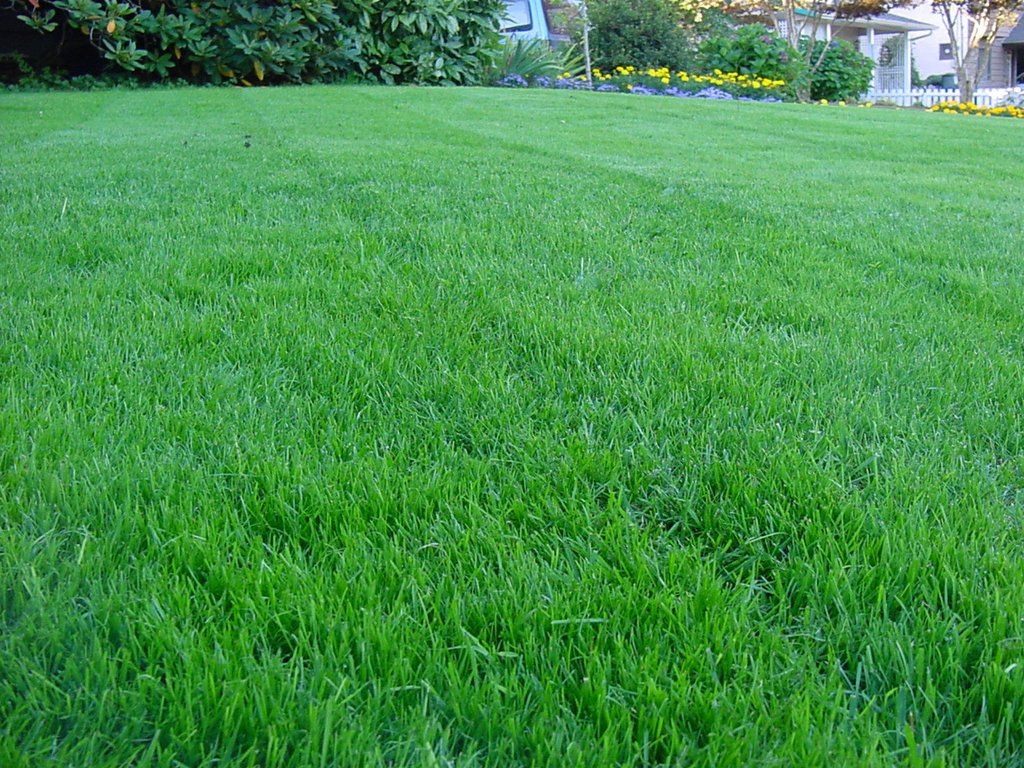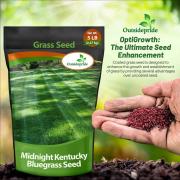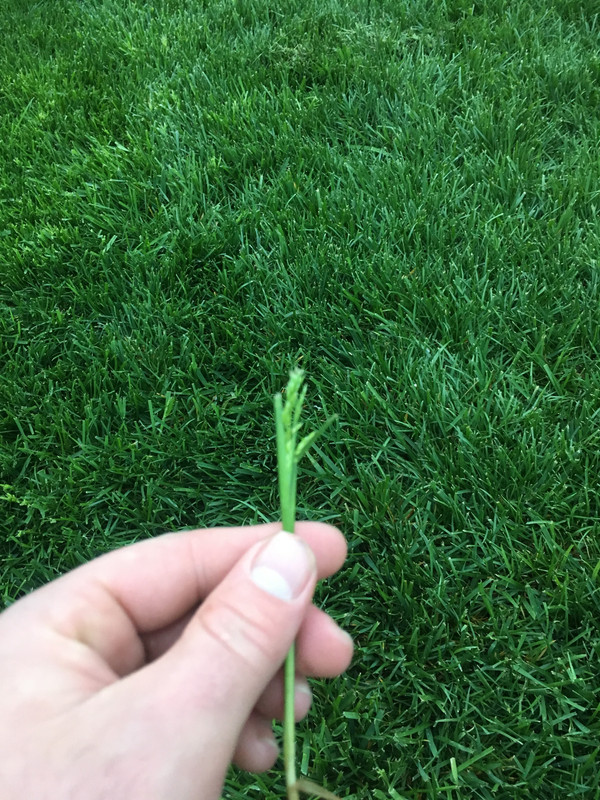


The Kentucky bluegrass is a dark green/blue compared to the apple-green color of Poa annua and Poa trivialis. The ligule is extremely short and square-ended, making a contrast with annual meadowgrass ( Poa annua) and rough meadowgrass ( Poa trivialis) in which it is silvery and pointed. Poa pratensis has a fairly prominent mid-vein (center of the blade). They are in flower from May to July, compared to annual meadowgrass ( Poa annua) which is in flower for eight months of the year. The conical panicle is 5–20 centimetres (2–8 in) long, with 3 to 5 branches in the basal whorls the oval spikelets are 3–6 millimetres (0.12–0.24 in) long with 2 to 5 florets, and are purplish-green or grey. The leaves have boat-shaped tips, narrowly linear, up to 20 centimetres (8 in) long and 3–5 millimetres (0.12–0.20 in) broad, smooth or slightly roughened, with a rounded to truncate ligule 1–2 millimetres (0.039–0.079 in) long. Poa pratensis is a herbaceous perennial plant 30–70 centimetres (12–28 in) tall. Poa pratensis is the type species of the grass family Poaceae. The name Kentucky bluegrass derives from its flower heads, which are blue when the plant is allowed to grow to its natural height of 60 to 90 cm (2 to 3 feet). Poa is Greek for fodder and pratensis is derived from pratum, the Latin for meadow. Poa pratensis was one of the many species described by Carl Linnaeus in his landmark work Species Plantarum in 1753. When found on native grasslands in Canada, for example, it is considered an unwelcome exotic plant, and is indicative of a disturbed and degraded landscape. It is also used for making lawns in parks and gardens and has established itself as a common invasive weed across cool moist temperate climates like the Pacific Northwest and the Northeastern United States. In its native range, Poa pratensis forms a valuable pasture plant, characteristic of well-drained, fertile soil. The Spanish Empire brought the seeds of Kentucky bluegrass to the New World in mixtures with other grasses.

Although the species is spread over all of the cool, humid parts of the United States, it is not native to North America. Poa pratensis, commonly known as Kentucky bluegrass (or blue grass), smooth meadow-grass, or common meadow-grass, is a perennial species of grass native to practically all of Europe, North Asia and the mountains of Algeria and Morocco.


 0 kommentar(er)
0 kommentar(er)
